 |
 |
Blue Spotted Slow-worms: |
| Author | Message |
|
David Bird Forum Specialist Joined: 17 Feb 2003 No. of posts: 515 View other posts by David Bird |
Posted: 12 May 2009 Had a couple of Blue spotted Slow-worms from a heathland site that I am rescuing from at the weekend. One had very bright light blue spots and the other had a huge number of spots almost in stripes. 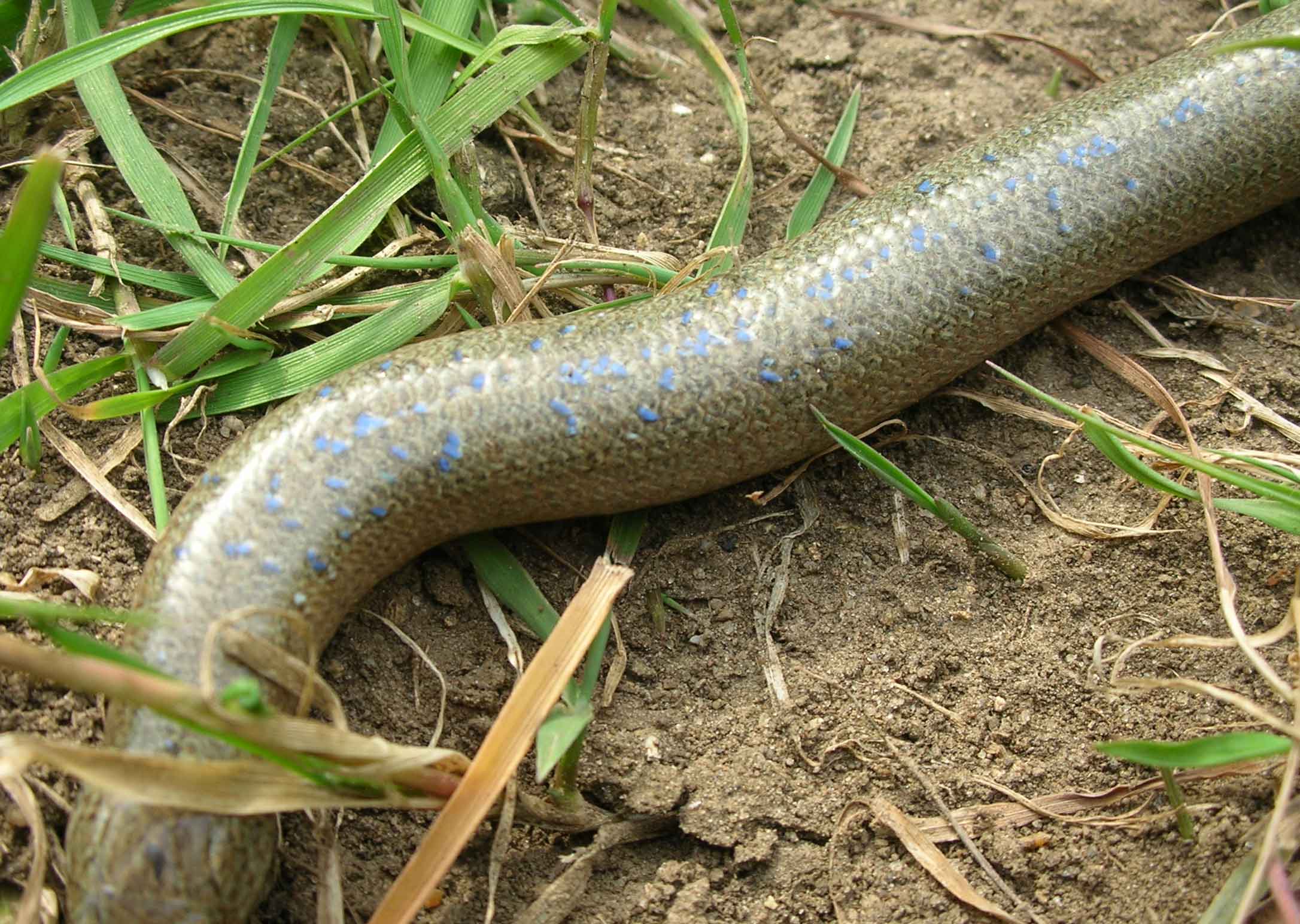 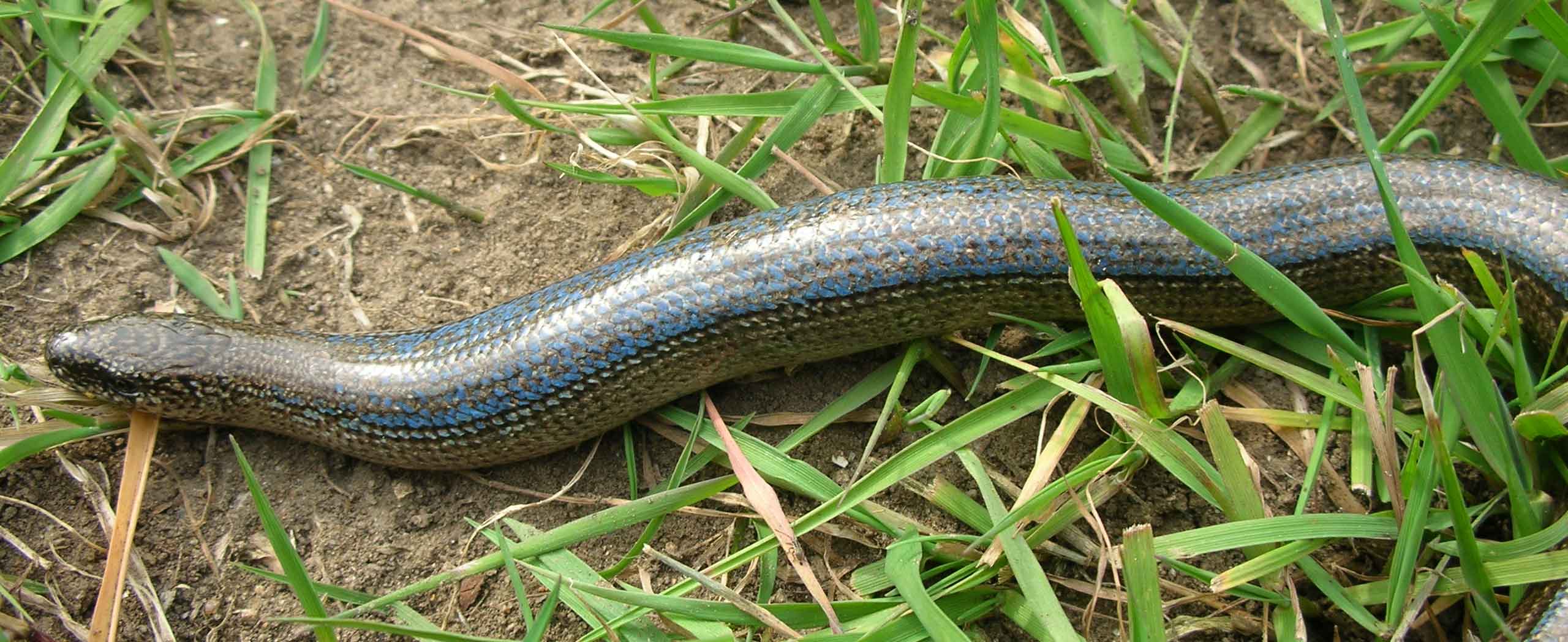 British Herpetological Society Librarian and member of B.H.S Conservation Committee. Self employed Herpetological Consultant and Field Worker. |
|
tim hamlett Senior Member Joined: 17 Dec 2006 No. of posts: 572 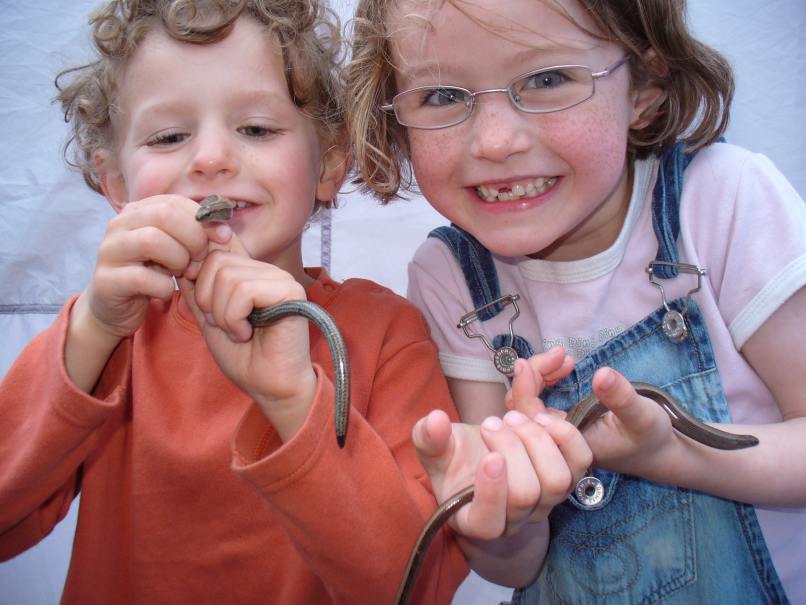 View other posts by tim hamlett |
Posted: 12 May 2009 amazing!!! they look like they've been painted. tim |
|
Suzi Senior Member Joined: 06 Apr 2005 No. of posts: 860 View other posts by Suzi |
Posted: 12 May 2009 As you all might recall I have over 30 slow worms in my compost heaps and I've never seen one with blue spots. I'm sure I'd notice if it looked like this one! Suz |
|
Caleb Forum Coordinator Joined: 17 Feb 2003 No. of posts: 448 View other posts by Caleb |
Posted: 13 May 2009 Not as impressive as Dave's, but a friend of mine just sent me this photo of a slow-worm from a Devon garden: 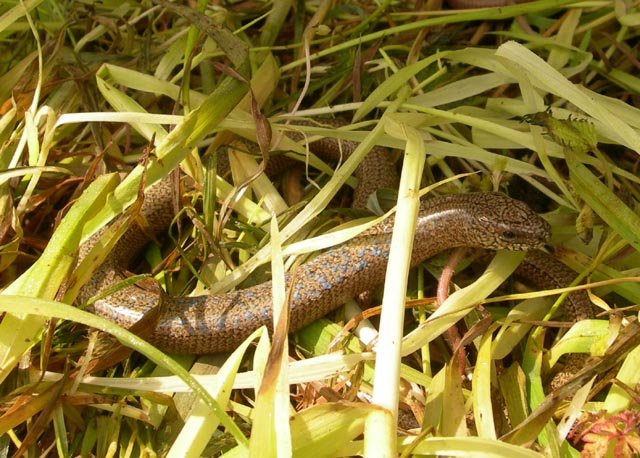
He described the animal as having 'blue pixels'. |
|
Peter Senior Member Joined: 17 Jan 2008 No. of posts: 260 View other posts by Peter |
Posted: 13 May 2009 I have found a few animals similar in appearance to the animal Caleb posted here in south Wales recently. I have never seen anything quite so impressive as the animal featured in the second image that David posted however. A few came close back in Hampshire when I was a lad 30 plus years ago, but that animal is something else.
Thanks for sharing the images with us David. Whats the story with the population you are rescuing? 
|
|
David Bird Forum Specialist Joined: 17 Feb 2003 No. of posts: 515 View other posts by David Bird |
Posted: 13 May 2009 Peter, The animals are on a wedge of humid heath in the Wareham area that still has outstanding mineral exraction permision next to a large quarry void and is destined for extraction of sand next year. There are also some Smooth snakes present and a dry bank that has a population of Sand Lizards which will require European Protected Species licenses before they can be translocated. British Herpetological Society Librarian and member of B.H.S Conservation Committee. Self employed Herpetological Consultant and Field Worker. |
|
will Senior Member Joined: 27 Feb 2007 No. of posts: 330 View other posts by will |
Posted: 18 May 2009 I found this one near Wareham last year - the (rather dull) blue spots united to form a vertebral stripe which made this male look like a female from a distance. Maybe a local concentration of blue spot / stripe alleles in the Wareham area ? |
|
snakey Member Joined: 14 Sep 2007 No. of posts: 30 View other posts by snakey |
Posted: 19 May 2009 what superb animals. i used to see quite a few blue spotted males many years ago near abersoch on the lleyn peninsula, although they never formed any regular patterns or stripes, and the blue wasn't nearly as vivid as davids pics |
|
will Senior Member Joined: 27 Feb 2007 No. of posts: 330 View other posts by will |
Posted: 20 May 2009 Hi Snakey Isn't Abersoch supposed to be inhabited by a 'cryptid' (animal as yet unverified by science - yeti etc) lizard allegedly more than a foot long, orange in colour and living in burrows ? I think it's called cenaprugwirion - don't suppose you saw one of these ?!
|
|
Caleb Forum Coordinator Joined: 17 Feb 2003 No. of posts: 448 View other posts by Caleb |
Posted: 20 May 2009 I think it supposedly had an 'orange-sized head' rather than being orange in colour. There was a letter about this creature in a late 80s BHS Bulletin- Karl Shuker seems to have discovered this in the late 90s, and has mentioned it in several publications since then. I've never seen any mention of it that wasn't based on that letter. |
|
David Bird Forum Specialist Joined: 17 Feb 2003 No. of posts: 515 View other posts by David Bird |
Posted: 20 May 2009 Caleb is correct, I believe the animal was supposed to be slow moving. I did wonder in one of my weirdest moments if it could actually be a few odd specimens of Tuatara as I believe that the Reverend Bateman who wrote the book The Vivarium in the 1890s lived in this area for a while. He did mention in his book that Tuatara were available for sale in Covent Garden and a price and also how they could be kept outside in a cold frame with sacking put over the enclosure in the winter. They are also very longed lived outliving humans so needn't be a breeding population. Just a thought anyway before my weekly electotherapy treatment. British Herpetological Society Librarian and member of B.H.S Conservation Committee. Self employed Herpetological Consultant and Field Worker. |
|
will Senior Member Joined: 27 Feb 2007 No. of posts: 330 View other posts by will |
Posted: 20 May 2009 fantastic - RAUK fieldtrip anyone ?! |
|
snakey Member Joined: 14 Sep 2007 No. of posts: 30 View other posts by snakey |
Posted: 20 May 2009 never came across any tuatara (or similar) on my visits to abersoch. as a child i used to spend my summer holidays there at a familly friends farm. but thats going back 30 yrs or more. at that time the commoner 4 species were quite abundant, especially vp and af. we did see natrix but not as often as adders. subsequent trips in recent years havent been as successful, although a couple of sites further along the peninsula towards aberdaron still have adder and slow worms |
|
snakey Member Joined: 14 Sep 2007 No. of posts: 30 View other posts by snakey |
Posted: 20 May 2009 in spite of never having come across tuatara in wales, i suppose the climate wouldn't be to dissimillar to parts of newzealand |
|
David Bird Forum Specialist Joined: 17 Feb 2003 No. of posts: 515 View other posts by David Bird |
Posted: 24 Jun 2009 Whilst RAUK was down there was an article regarding a very blue Slow worm at Blandford St Mary in the Blackmore Vale Magazine. It had been seen several times in a garden and a photograph taken of it on their compost heap the last time. I contacted Mr.Ashwin who had the animal in his garden and he sent me the original photo and kindly said that I could put it on here. As you can see this is almost completely blue on the dorsal quarter. 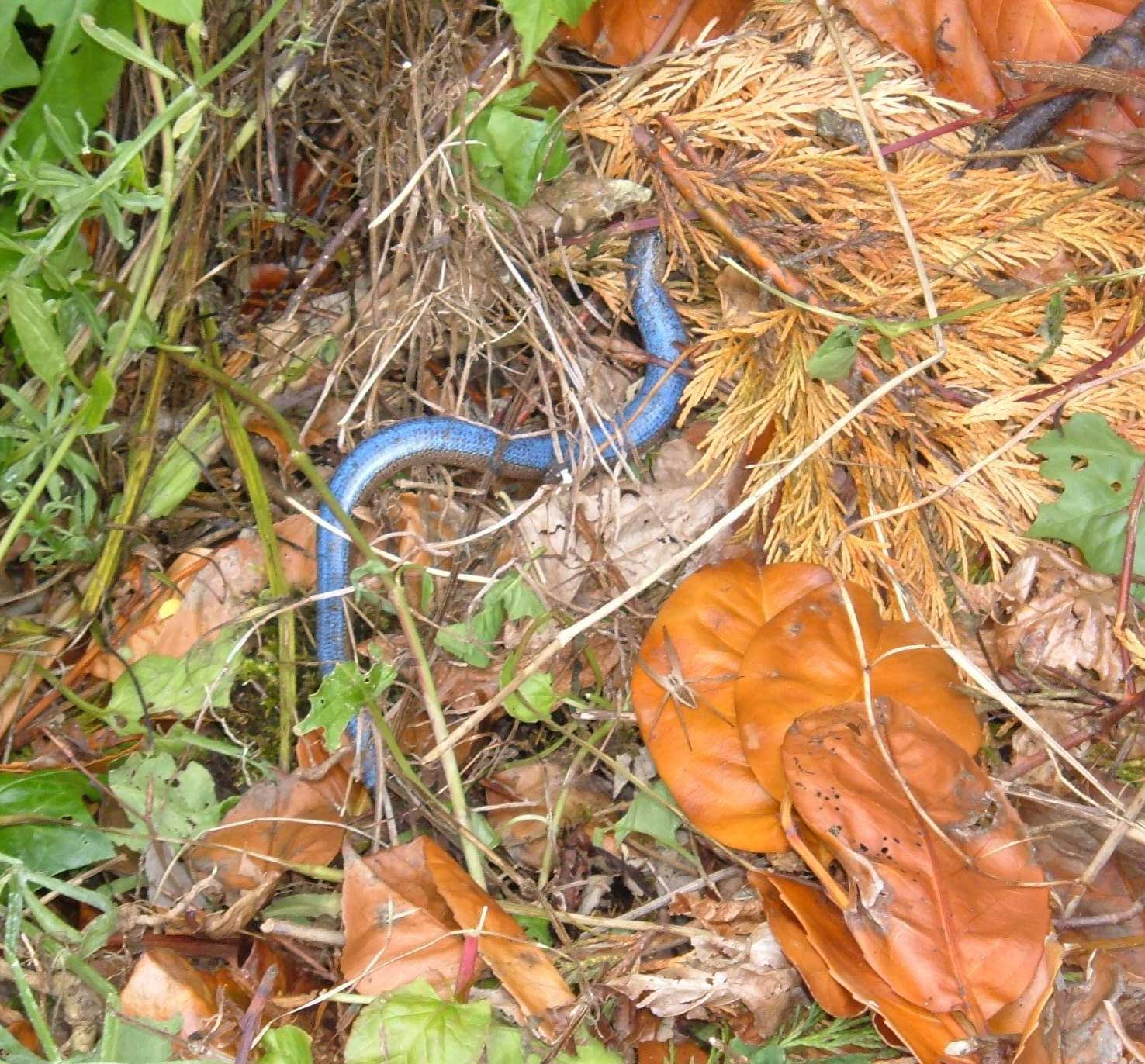
Just a coincidence that this one has been found in Dorset a matter of weeks when I found one but this time it is only just up the road from where I live British Herpetological Society Librarian and member of B.H.S Conservation Committee. Self employed Herpetological Consultant and Field Worker. |
|
tim hamlett Senior Member Joined: 17 Dec 2006 No. of posts: 572  View other posts by tim hamlett |
Posted: 24 Jun 2009 how beautiful! tim |
|
zarozinia Member Joined: 12 Aug 2009 No. of posts: 5 View other posts by zarozinia |
Posted: 12 Aug 2009 Stunning specimen, I have tonnes of Slow worms in my garden, but ive never seen one with blue spots. |
|
herpetologic2 Senior Member Joined: 15 Jun 2004 No. of posts: 1369 View other posts by herpetologic2 |
Posted: 24 Aug 2009 Surely a description for the BHS bulletin or similar for that animal - it looks like it has been painted - perhaps an article for the ARG UK Newsletter would be great J Vice Chair of ARG UK - self employed consultant - visit ARG UK & Alresford Wildlife |
- Blue Spotted Slow-worms |